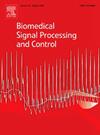White patchy skin lesion classification using feature enhancement and interaction transformer module
IF 4.9
2区 医学
Q1 ENGINEERING, BIOMEDICAL
引用次数: 0
Abstract
White patchy skin lesions have always been difficult to distinguish, yet precise identification of specific types can enable targeted treatment and alleviate patient anxiety. Deep convolutional neural networks (DCNNs) show great potential in this regard. However, DCNNs still exhibit limitations such as incapacity to capture global correlations, inability to discern invisible data distributions, and difficulty in handling imbalanced datasets. To address these challenges, we propose a feature enhancement and interaction transformer module for accurately identifying common white patches. Our approach begins with the development of a dual-position encoding attention and convolution hybrid submodule, which aims to model the global information of the feature domain and enhance feature representation. Subsequently, we construct a feature interaction submodule on the batch dimension to enable the DCNN to explore sample relationships, learn about invisible distribution from the dataset, and reduce the imbalance problem. Based on the dataset comprising four types of white patchy skin lesions, the proposed approach achieved an accuracy, precision, recall, F1 score, and AUC of 92.65 %, 92.83 %, 92.65 %, 92.74 %, and 0.98, respectively. These results demonstrate the superior performance of our approach compared to other state-of-the-art models, underscoring its potential to enhance the classification of white patchy skin lesions and expand their clinical applications without compromising the integrity of the DCNN structure.
求助全文
约1分钟内获得全文
求助全文
来源期刊

Biomedical Signal Processing and Control
工程技术-工程:生物医学
CiteScore
9.80
自引率
13.70%
发文量
822
审稿时长
4 months
期刊介绍:
Biomedical Signal Processing and Control aims to provide a cross-disciplinary international forum for the interchange of information on research in the measurement and analysis of signals and images in clinical medicine and the biological sciences. Emphasis is placed on contributions dealing with the practical, applications-led research on the use of methods and devices in clinical diagnosis, patient monitoring and management.
Biomedical Signal Processing and Control reflects the main areas in which these methods are being used and developed at the interface of both engineering and clinical science. The scope of the journal is defined to include relevant review papers, technical notes, short communications and letters. Tutorial papers and special issues will also be published.
 求助内容:
求助内容: 应助结果提醒方式:
应助结果提醒方式:


